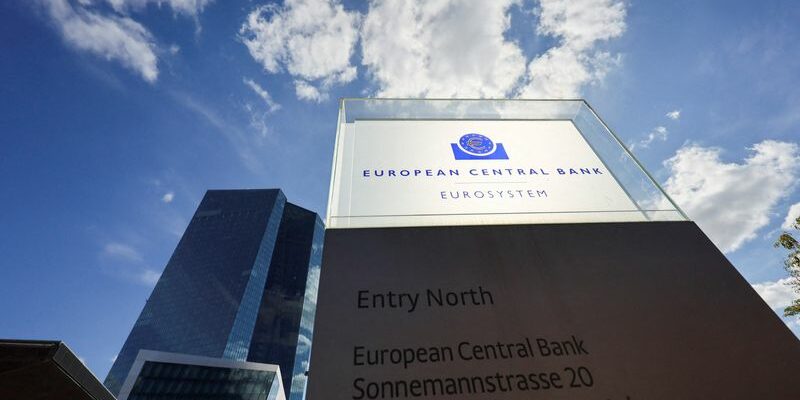by Balazs Koranyi and Francesco Canepa
FRANKFURT (Reuters) – Policymakers at the European Central Bank (ECB) overwhelmingly support the idea of a first cut in key rates in June and some are informally calling for another cut in July to achieve a compromise with a small group which would prefer a reduction in borrowing costs before this deadline, three sources reported to Reuters on Friday.
The central bank governors of Germany, France, Finland and Lithuania raised on Friday the possibility that the ECB would soon reduce borrowing costs, currently at record levels, due to falling inflation in the euro zone faster than expected.
The President of the ECB, Christine Lagarde, during the conference which followed the institution’s monetary policy announcements on Thursday, herself suggested that we “will know a lot more in June”, paving the way for a possible monetary easing at this deadline.
According to the sources, all directly informed of the discussions within the ECB, the institution’s officials spent relatively little time on Thursday discussing rate cuts, and it is clear that a majority is in favor of a first decision to this effect in June.
Some members of the ECB, all from the southern countries of the European Union, would however prefer a first rate cut at the monetary policy meeting on April 11.
In order to strengthen the consensus around the month of June, certain ECB officials, presented as “hawks”, put forward the idea, on the sidelines of the meeting of the Governing Council, of planning a second reduction in the rent of the money in July, the sources said.
When asked, an ECB spokesperson declined to comment.
LOOKING FOR A COMPROMISE
The sources noted that no agreement on such a compromise has yet been reached and that it is simply a possibility being discussed informally in order to preserve unity within the governing council.
However, such a compromise within the ECB would not be a first. In December 2022, unable to agree on the extent of the rate increase, with some members favoring an increase of 75 basis points, the central bank chose to proceed with an increase of only 50 points while suggesting in its press release that an increase of the same magnitude would take place at its next meeting. This then made it possible to mollify the dissidents.
Currently, financial markets are pricing in four rate cuts this year, with a first cut in June, implying cuts at each of the meetings scheduled between now and the end of the year.
According to the sources, the timing of the ECB’s first rate cut would also influence how a new operational framework – expected to be announced on March 13 – would be implemented.
The new framework will likely require a narrowing of the gap between the deposit rate, currently at 4 percent, and the refinancing rate, set at 4.5 percent, other sources told Reuters last month.
But some ECB officials fear that what is supposed to be a technical adjustment could be confused with a change in monetary policy, and therefore want to implement it later, when the ECB actually changes its rates.
The sources also noted that a change in reserve requirements for commercial banks, a move advocated in the past by some ECB officials, is not part of the current proposals.
(French version Claude Chendjou, edited by Blandine Hénault)
Copyright © 2024 Thomson Reuters
